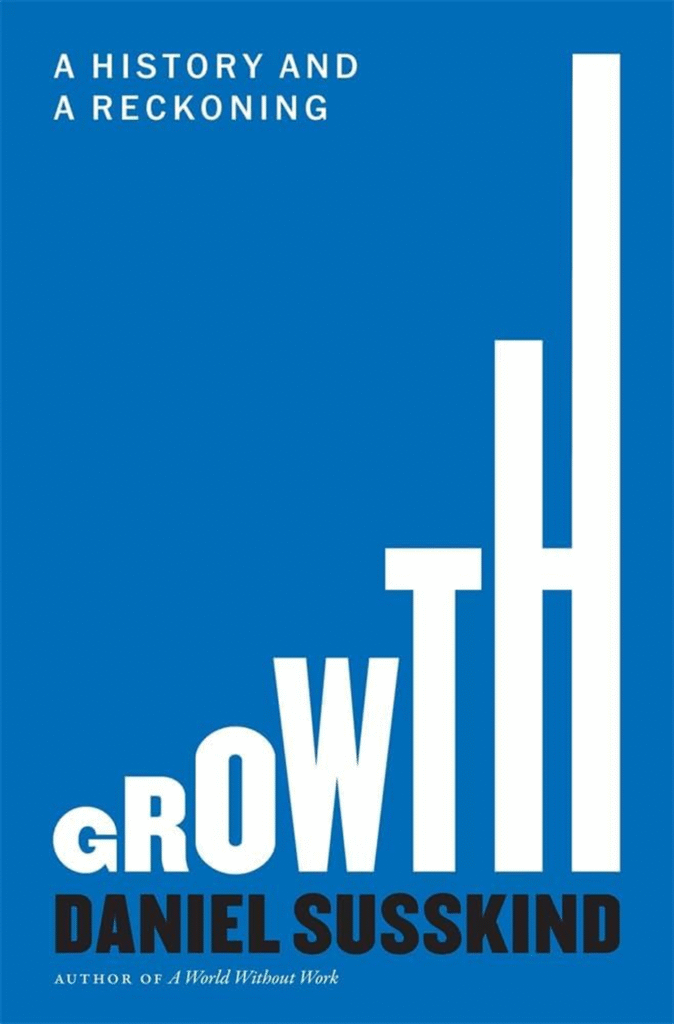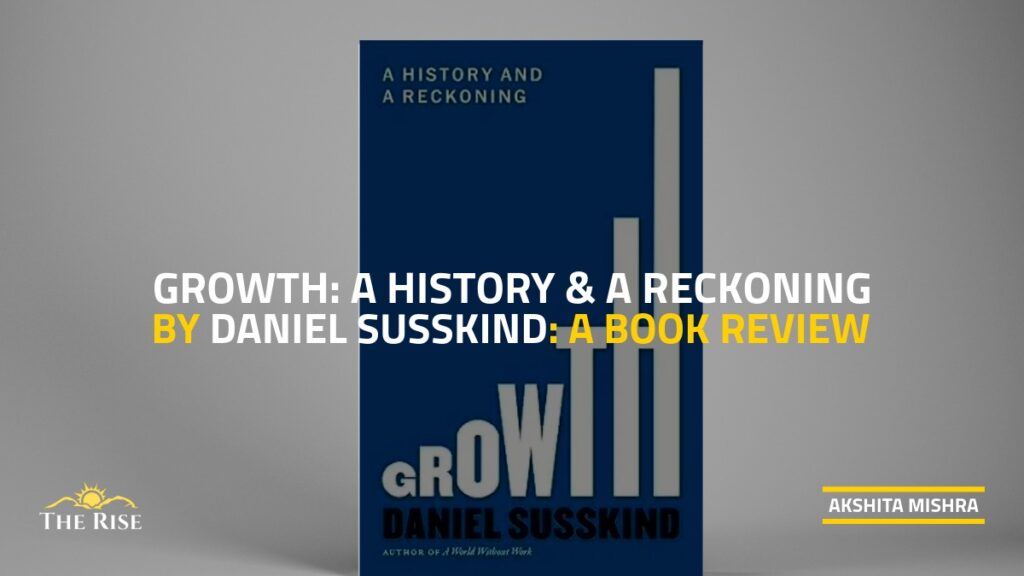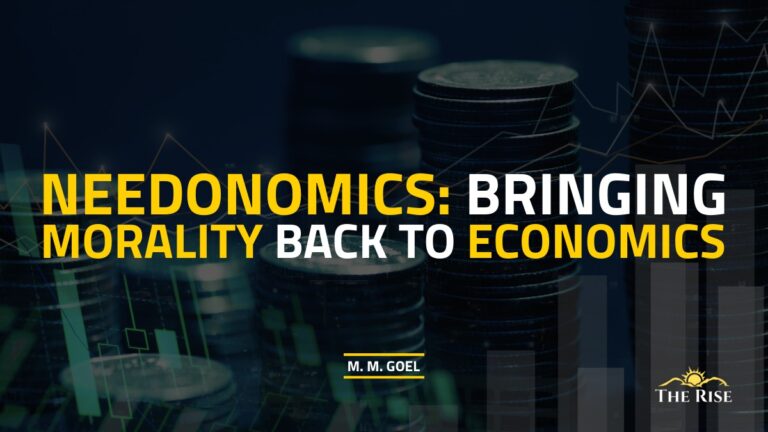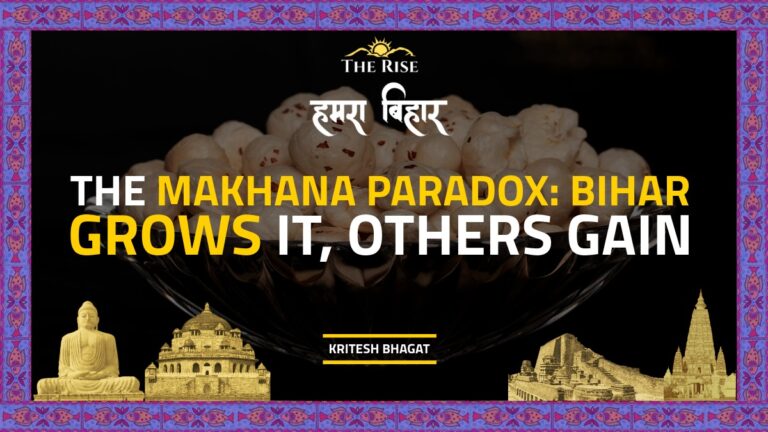We need three things above all. First: growth. Second: growth. And Third: growth. Growth isn’t everything, that’s true. But without growth, everything is nothing.
— Angela Merkel
In 2025, India overtook Japan to become the world’s fourth-largest major economy, recording growth rates above 6% despite global headwinds. It is currently projected to be the world’s fastest-growing economy in 2025-26. From bustling tech hubs in Bengaluru to an expanding manufacturing base under the “Atmanirbhar Bharat” initiative, the country has become a case study in 21st-century dynamism. Yet, as Daniel Susskind’s ‘Growth- A History and A Reckoning’ reminds us, raw GDP figures tell only part of the story: they can mask persistent inequality, uneven development, and most importantly, raise the question of whether GDP is a means to an end or an end in itself.
Also Read: Tied by Roots, Driven by Purpose: The Women Entrepreneurs of Nagaland
In his recently published book, Susskind focuses on how an optimal level of growth can be achieved, which not only fulfills the economic objectives of maximizing income but also meets the social obligations of equality, equity, and justice. Additionally, he also attempts to provide some possible reasons and effects vis-à-vis the sudden and continuing spurt of growth that began in the eighteenth and nineteenth centuries, while also comprehensively exploring the past, present and future of growth. Released to much critical acclaim and appreciation, it was published by the renowned Belknap Press, Harvard’s prestigious imprint for boundary-pushing scholarship.

‘Growth’ has already been ranked amongst the ‘great historical luxuries’, which does ample credit to Susskind’s distinguished profile as a Research Professor of Economics at King’s College, London, and an ex-member of the Prime Minister’s Strategy and Policy Unit.
To set the stage, Susskind begins with a startling image: a Stone Age hunter-gatherer and an eighteenth-century labourer, though separated by thousands of years, were living virtually the same economic life. It was the age of the “Long Stagnation,” when humanity’s material progress inched forward so slowly that generations passed with barely any change.
Also Read: Ancient Indian Laws on Women’s Rights: From Rig Vedic Equality to Modern Patriarchy
This “Long Stagnation” sets the backdrop of Susskind’s central investigation. He offers the readers a crisp and lucid synthesis of a multitude of arguments made by economists, mathematicians and statisticians to explain the unprecedented growth in the past two centuries- a surge which propelled the world out of this Long Stagnation. The book is replete with reasoning and discussions that are based upon a concrete and well-structured logical flow of arguments supported by core erudite theories of eminent economists like Malthus, Robert Lucas and Paul Romer. In the initial part of the book, the author explains, in detail, the famous Malthusian Trap- that is, the advancement in technology could increase the standard of living, but the subsequent increase in population would outpace the growth in resources, implying that the supply of resources will eventually fall back to the original level.
Also Read: Performance of Non-Performing Assets In Indian Banks
Another core issue of the book is the tension between the promise and price of growth, that is, the ongoing confrontation between the supporters of growth and the formidable degrowthers. While growth facilitates a higher standard of living, including access to better education and healthcare, reduced poverty, and enhanced overall prosperity, its single-minded pursuit can lead to environmental degradation, a deepened social divide, and bursts of anxiety due to unemployment and slowed individual development. Susskind argues for supporting growth only to the extent that it remains both feasible and broadly beneficial.. In a major portion of the book, he focuses on solving the growth dilemma: that is, “ while growth may be to blame for many serious problems, it is also responsible for many greatest triumphs.”
‘Growth- A History and A Reckoning’ is a rich treasure trove of basic, yet fundamental theories on which the framework of earlier economics is based; however, it is a welcome read for people associated with both economic and non-economic disciplines. It offers the former with a revisionary, unbiased, and fairly balanced view of the models and opinions of renowned economists on growth; additionally, it also unravels the history of the evolution and improvements in the calculation of GDP and other important estimators.
To the latter group of people, who have limited or negligible knowledge of economics, it is an informative read that gives them a gist about the general concept of growth in a simple, clear, and precise manner, which is by and large free from any technical jargon.
Though the book is an excellent read from an academic and theoretical point of view, it is considerably abstract, and the suggestions given, focusing on a directed technological change, intellectual property reform, and high-skilled and easier immigration, are more or less applicable to the rich and developed countries. He falls short of giving some space to the poorer and developing nations of the Global South, limiting his vision only to far-advanced Western nations.
Growth transcends the contours of economics, policy making, and numbers. It is not a phenomenon; it is a change that is tacitly and constantly happening everywhere and every time. Though the suggestions given in the book are not explicitly with reference to developing countries, the book provides some valuable insights that can be beneficial for the Indian economy. For instance, in the current scenario of rising geopolitical tensions and economic uncertainty, Susskind advocates an approach of GDP minimalism, which implies a balance between high incomes and societal welfare. That is, while a stable GDP growth rate should be maintained, it is imperative that the government supports and uplifts the underprivileged sections of society also. For a country as diverse and populated as India, the major challenge that the government faces is the inequitable distribution of income. According to Oxfam International, while India is one of the fastest-growing economies in the world, it is also one of the most unequal countries, with the top 10% of the total population holding 77% of the total national wealth. Hence, the issues of GDP growth and achieving equitable distribution of income must be given proportionate importance in the national agenda.
In conclusion, ‘Growth- A History and A Reckoning’ is an excellent read that serves the purpose of enhancing our knowledge and clarity about growth and development. It is a book that offers both perspective and vision, spanning the past, present, and future of humanity’s efforts to enhance welfare and create a better world to live in.
(Edited by Sneha Yadav)
(Akshita Mishra is an intern with TheRise.co.in)

































































